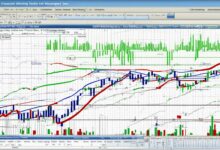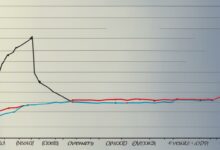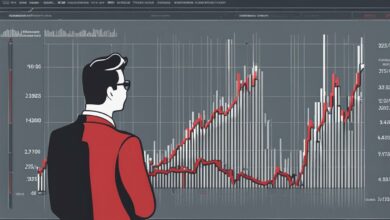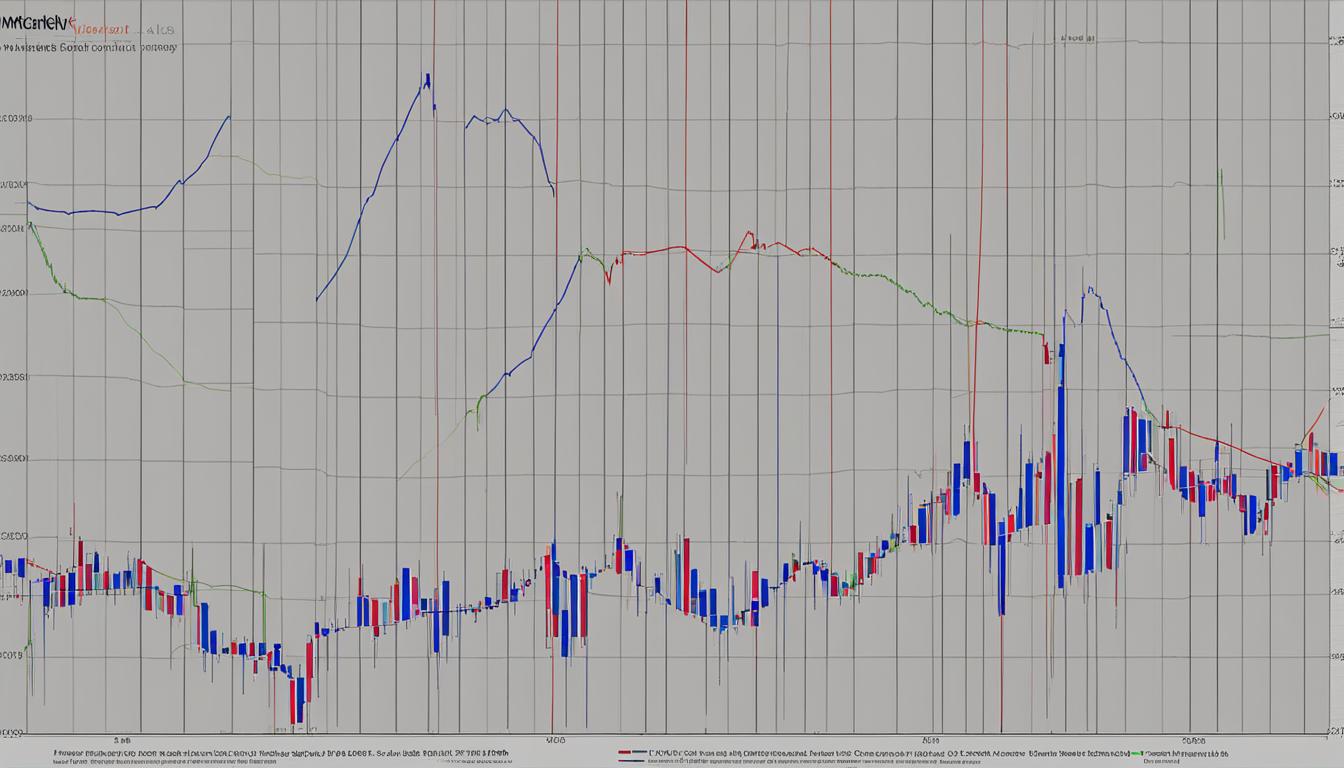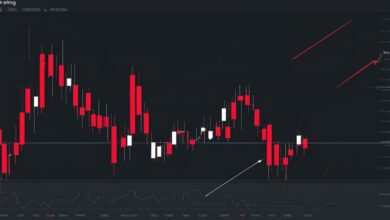An Introduction To Swing Trading

Welcome to our guide on swing trading, a popular trading strategy that involves holding positions for longer than a single day. Swing trading offers traders the opportunity to capture short-term profits while minimizing risks. In this article, we will explore the fundamentals of swing trading, including strategies, stock selection, market conditions, technical indicators, and more.
Key Takeaways:
- Swing trading is a trading strategy that involves holding positions for several days or weeks.
- Swing traders rely on technical analysis, such as price channels and moving averages, to make trading decisions.
- Selecting the right stocks with high liquidity and volatility is crucial for successful swing trading.
- Swing trading strategies vary depending on market conditions, such as bull or bear markets.
- Using moving averages, particularly the exponential moving average, is common in swing trading.
Understanding Swing Trading Strategies
In swing trading, having a solid understanding of effective strategies is key to success. Let’s explore some important techniques, tips, and considerations for swing trading.
Swing Trade Selection
When selecting stocks for swing trading, it’s crucial to focus on liquid and volatile large-cap stocks. These stocks offer the necessary liquidity for easy buying and selling, while volatility provides opportunities for profit. As a beginner, it’s essential to do thorough research on potential swing trading stocks and analyze their historical performance.
Technical Analysis
Technical analysis is a fundamental aspect of swing trading. Traders often use exponential moving averages (EMAs) to identify trends and potential entry and exit points. By analyzing price charts, swing traders can spot patterns and assess market sentiment, which helps in making informed trading decisions.
Another popular technique is using EMA crossovers. For instance, a bullish crossover occurs when the price rises above the nine-, 13-, and 50-period EMAs, indicating a potential long entry. Conversely, a bearish crossover signals a potential short entry or exit of a long position when the price falls below the EMAs.
Risk Management and Position Sizing
In swing trading, proper risk management and position sizing are critical for long-term success. Traders should set stop-loss orders to minimize potential losses and protect capital. It’s essential to determine the appropriate position size based on risk tolerance and account size. By effectively managing risk and position sizing, swing traders can maintain consistency and minimize the impact of losing trades.
Remember, swing trading is a skill that requires practice and dedication. By implementing effective strategies, conducting thorough research, and monitoring market conditions, swing traders can maximize their potential for profitable trades.
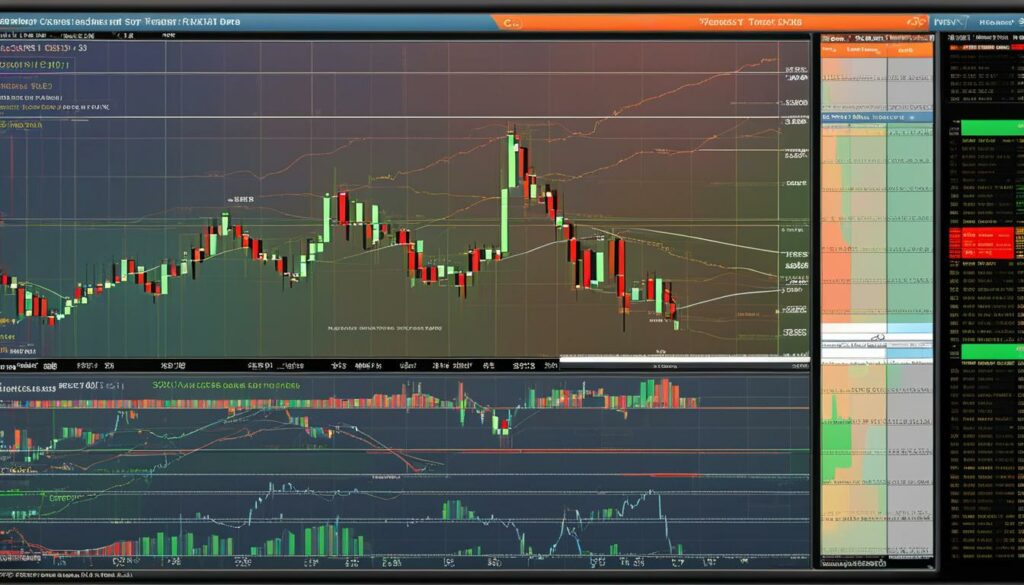
Picking the Right Stocks for Swing Trading
In swing trading, selecting the right stocks is crucial for success. Swing traders typically focus on large-cap stocks that have high liquidity and volatility. This combination ensures that the stocks can be easily bought and sold while also providing opportunities for profit. Liquidity is important because it allows traders to enter and exit positions without significant price impact. Volatility, on the other hand, creates price movements that swing traders can capitalize on.
When picking stocks for swing trading, it’s essential to look for those that have a history of price swings and relatively high trading volumes. Stocks with low liquidity can be difficult to exit quickly, which can be problematic for swing traders who aim to hold positions for a few days or weeks. Additionally, swing traders often favor stocks that are part of industries or sectors that are currently in favor or experiencing positive momentum.
One useful tool for identifying potential swing trading stocks is the relative strength index (RSI). The RSI measures the speed and change of price movements, highlighting overbought and oversold conditions. Swing traders often seek stocks that are oversold on the RSI, indicating a potential price reversal and opportunity for profit. It’s important to note that no single indicator can guarantee success in swing trading, so it’s recommended to use a combination of technical indicators and analysis to make informed decisions.

Fundamental Analysis vs. Technical Analysis
When considering which stocks to trade, swing traders have the option to use either fundamental analysis or technical analysis. Fundamental analysis involves evaluating a company’s financial health, including its revenue, earnings, and overall market position. This approach aims to identify stocks that are undervalued or have strong growth potential.
On the other hand, technical analysis focuses on historical price data and patterns to predict future price movements. Swing traders who rely on technical analysis use tools such as chart patterns, trend lines, and moving averages to identify entry and exit points. Technical analysis can be particularly useful in swing trading, as it allows traders to take advantage of short-term price movements.
Ultimately, the choice between fundamental and technical analysis depends on the trader’s personal preferences and trading style. Some traders find success using a combination of both approaches. Regardless of the method chosen, it’s important to thoroughly research and analyze potential swing trading stocks before making any trading decisions.
Swing Trading in Different Market Conditions
Swing trading strategies need to be adapted to different market conditions in order to maximize profitability. Whether it’s a bear market, a bull market, or something in-between, understanding how to navigate these conditions is crucial for swing traders. Let’s explore how swing trading strategies can be tailored to different market scenarios.
Bear Market Swing Trading
In a bear market, where prices are declining, swing traders may need to adjust their approach. Due to the increased volatility and potential for larger price swings, swing traders may choose to shorten their trade period. This allows them to lock in profits and mitigate potential losses. Additionally, holding more cash during a bear market can help swing traders capitalize on buying opportunities when prices reach attractive levels.
Bull Market Swing Trading
A bull market presents its own set of challenges and opportunities for swing traders. In a bull market, where prices are rising, swing traders may find it easier to identify potential trade setups. However, entry points may be higher as prices are already elevated. In this scenario, swing traders need to be patient and wait for suitable pullbacks or retracements before entering a trade. This ensures that they are entering at a more favorable price and reducing the risk of buying at the peak of a rally.
In-Between Market Conditions
Sometimes, market conditions can be characterized as neither bearish nor bullish, but rather in-between. These conditions are often marked by increased volatility and uncertainty. Swing trading tends to be most favorable during these periods as there are more opportunities for price appreciation. Traders can take advantage of the market swings to capture profits. However, it’s important to manage risk during these times as sudden market shifts can result in losses. Implementing strict stop-loss orders and closely monitoring trades is crucial to navigating in-between market conditions successfully.
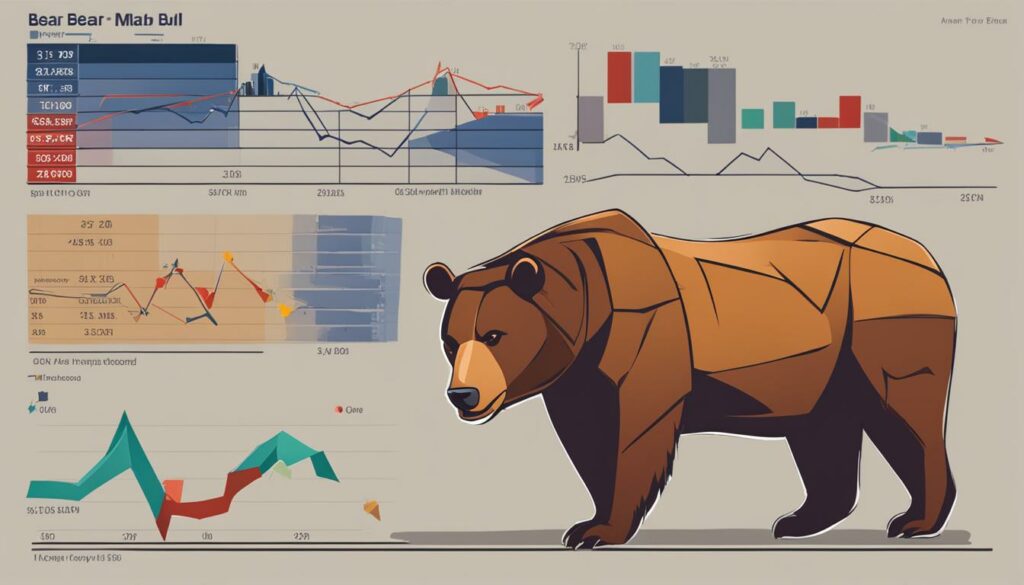
| Market Condition | Key Considerations |
|---|---|
| Bear Market | Shorten trade period, hold more cash, consider using options for selling securities |
| Bull Market | Be patient for suitable pullbacks, avoid buying at high price levels |
| In-Between Market | Capture opportunities for price appreciation, manage risk through stop-loss orders |
The table above summarizes the key considerations for swing trading in different market conditions. It’s essential for swing traders to stay adaptable and adjust their strategies as market conditions evolve. By understanding the unique challenges and opportunities presented in bear, bull, and in-between markets, swing traders can increase their chances of success.
Using Moving Averages in Swing Trading
In swing trading, moving averages, particularly the exponential moving average (EMA), are a commonly used tool. The EMA gives more weight to recent price data, making it a valuable indicator for identifying trends and potential entry/exit points. Let’s explore how swing traders can utilize moving averages to enhance their trading strategies.
EMA Crossover Strategy
One popular approach is the EMA crossover strategy. This strategy involves monitoring the interaction between different EMAs to identify potential trading opportunities. A bullish crossover occurs when a shorter-term EMA, such as the nine-period EMA, crosses above a longer-term EMA, such as the 13-period or 50-period EMA. This crossover signals a potential long entry point. On the other hand, a bearish crossover occurs when the price falls below the EMAs, indicating a potential reversal and a potential short entry or exit of a long position.
| Crossover Type | Action |
|---|---|
| Bullish Crossover | Consider a long entry |
| Bearish Crossover | Consider a short entry or exit of a long position |
It’s important to note that the selection of specific EMAs for the crossover strategy may vary among traders. The nine-, 13-, and 50-period EMAs are commonly used, but some traders may prefer different periods based on their trading style and the timeframe they are analyzing.
By incorporating moving averages into their trading strategy, swing traders can gain insights into potential trends, confirm entry and exit points, and identify conditions for trading opportunities. However, it’s crucial to remember that moving averages are just one of many tools available in swing trading, and they should be used in conjunction with other indicators and analysis techniques.
Using Baseline Value in Swing Trading
When it comes to swing trading, one effective strategy that traders often employ is using baseline value. Baseline value refers to the average price level at which a stock tends to trade above and below. By understanding and monitoring this baseline, swing traders can make informed trading decisions and capitalize on price movements.
Swing traders typically go long when the price of a stock is heading up from the baseline and short when it is heading down. The goal is not necessarily to pinpoint the exact bottom or top, but rather to capture the swings in price movements for profitable trades. By utilizing the baseline value in their analysis, swing traders can identify potential entry and exit points with greater precision.
“Understanding the baseline value in swing trading is like having a compass that guides us in the financial markets. It helps us determine the overall direction of a stock’s price movement and allows us to take advantage of the resulting trends.”
By incorporating the baseline value into their decision-making process, swing traders can enhance their trading strategies. It provides them with a framework for identifying potential trade setups and helps them align their trades with the overall trend. Additionally, the baseline value can serve as a valuable reference point for setting stop-loss orders and managing risk in swing trading.
| Advantages of Using Baseline Value in Swing Trading | Disadvantages of Using Baseline Value in Swing Trading |
|---|---|
|
|
Overall, incorporating the baseline value into swing trading strategies can provide traders with valuable insights and increase their chances of making profitable trades. However, it is important to note that swing trading involves risks, and traders should always conduct thorough analysis and utilize other technical indicators for confirmation before making trading decisions.

Taking Profits in Swing Trading
When it comes to swing trading, knowing when to take profits is essential for maximizing returns and managing risk. Successful swing traders have a clear profit-taking strategy that enables them to exit positions at the right time, capturing gains before potential reversals occur. In this section, we will explore some effective profit-taking strategies used by swing traders.
One common approach is to aim to exit positions as close as possible to the upper or lower channel line. This line represents the boundaries of the price channel in which the stock is trading. In a strong market, swing traders can wait for the price to reach the channel line before taking profits. This strategy allows them to ride the upward momentum and potentially capture additional gains.
However, in a weaker market, swing traders may choose to take profits before the channel line is hit. This precautionary measure helps safeguard against potential reversals that could erode profits. By adapting their profit-taking strategy to market conditions, swing traders can optimize their returns and minimize the impact of market fluctuations.
| Profit-Taking Strategy | Market Conditions |
|---|---|
| Exit at upper or lower channel line | Strong market |
| Take profits before channel line is hit | Weaker market |
Effective trade management is crucial in swing trading. Setting profit and loss levels helps swing traders maintain discipline and avoid emotional decision-making. By defining their profit targets and adhering to them, swing traders can ensure that they capture a significant portion of the price movement before exiting their positions.
It’s important for swing traders to monitor their trades closely and adapt their profit-taking strategy as market conditions evolve. This includes regularly reviewing charts, analyzing price action, and adjusting profit targets based on new information. By staying vigilant and proactive, swing traders can make informed decisions and increase their profitability.
Getting Started with Swing Trading
If you’re interested in starting swing trading, there are a few key things you need to consider. First and foremost, you’ll need upfront capital to invest in stocks. It’s important to have a clear understanding of your risk tolerance and allocate funds accordingly. Additionally, you’ll need the right setup to execute your trades effectively. This includes having charting software that allows you to analyze stock charts and identify potential entry and exit points.
Understanding simple moving averages (SMAs) and trading channels is crucial for swing trading. SMAs can help you identify trends and potential reversals, while trading channels can help you determine price targets and support and resistance levels. Technical analysis plays a significant role in swing trading, so having a solid grasp of these concepts is essential.
To get started with swing trading, it’s crucial to use technical analysis to identify potential trade opportunities. This involves analyzing price patterns, trend lines, and other indicators to assess the strength and direction of a stock’s movement. By combining technical analysis with proper risk management techniques, you can increase your chances of success in swing trading.
Swing Trading Setup Checklist:
- Upfront capital for investment
- Charting software for technical analysis
- Understanding of simple moving averages (SMAs) and trading channels
- Ability to identify potential trade opportunities using technical analysis
- Risk management techniques to protect your capital
Table: Pros and Cons of Swing Trading
| Pros | Cons |
|---|---|
| Opportunity for short-term profits | Requires time and effort to analyze stocks and identify trade opportunities |
| Less stressful than day trading | Potential for missed opportunities for quick gains due to longer hold periods |
| Allows for flexibility in trading schedule | Requires a strong understanding of technical analysis and market conditions |
| Lower risk compared to long-term investing | Market conditions can impact profitability |
Starting swing trading can be challenging, but with the right knowledge and preparation, it can offer lucrative opportunities. Remember to start small and gradually increase your position sizes as you gain experience. It’s also important to stay disciplined and adhere to your trading plan. By following these guidelines and continuously improving your skills, you can embark on a successful swing trading journey.

Potential Profits in Swing Trading
Swing trading has the potential to generate significant profits for traders who effectively utilize this strategy. With the right skills and knowledge, swing traders can capture short-term gains while minimizing risks. However, it is important to note that swing trading also comes with certain caveats and challenges.
One of the main advantages of swing trading is the potential for substantial profits. Unlike day trading, swing traders hold their positions for several days or weeks, allowing them to take advantage of larger price movements. By capturing these swings, swing traders can capitalize on opportunities for profit.
However, it is important to understand that swing trading requires a strong understanding of technical analysis and market conditions. Traders must be able to identify potential entry and exit points based on technical indicators and price patterns. This requires skill and experience in analyzing charts and interpreting market trends.
“Swing trading offers the potential for significant returns, but it is not without its challenges. Traders must be disciplined and patient, as swing trades can take longer to materialize. It is also important to stay informed about market news and events that could impact the stocks being traded.”
Furthermore, swing trading may not be suitable for beginner traders or those seeking quick gains. This trading style requires a calm and disciplined mindset, as well as the ability to manage emotions and avoid impulsive decisions. Additionally, periods of low volatility in the market can impact the profitability of swing trades, making it important for traders to adapt their strategies accordingly.
In conclusion, swing trading has the potential to yield significant profits for traders who approach it with the right skills and mindset. By employing effective strategies, managing risks, and staying informed about market conditions, swing traders can navigate the complexities of the market and achieve success in this trading style.

The Risk of Swing Trading
In swing trading, like any other form of trading, there are inherent risks that traders must understand and manage effectively. While swing trading is generally considered less risky than other short-term trading styles, there is still a potential for losses if trades are not properly managed. Risk management is essential in swing trading to protect capital and ensure long-term success.
Risks in Swing Trading
One of the main risks in swing trading is market volatility. Prices can fluctuate rapidly, and unexpected events can cause significant price movements, leading to potential losses. Swing traders must be prepared for these fluctuations and have strategies in place to mitigate risk. Proper risk management involves setting stop-loss orders, which automatically close a trade when a predetermined level of loss is reached. This helps to limit losses and protect capital.
Another risk in swing trading is the potential for missed opportunities. While swing trades offer the potential for significant profits, longer hold periods may result in missed opportunities for quicker gains. Traders must be patient and disciplined, sticking to their strategies even when the market may seem more favorable for shorter-term trades.
Effective Risk Management Strategies
To manage risk effectively in swing trading, traders should consider the following strategies:
- Diversification: Spreading trading capital across multiple stocks or sectors can help reduce risk. By not overrelying on a single position, traders can minimize losses if one trade does not perform as expected.
- Position Sizing: Determining the appropriate position size based on risk tolerance is crucial. Traders should avoid risking too much of their capital on a single trade, as this can lead to significant losses if the trade goes against expectations.
- Regular Monitoring: Monitoring trades regularly and staying up-to-date with market news and developments can help identify potential risks and take necessary actions to protect capital. Keeping a watchful eye on technical indicators and market trends can help guide decision-making.
By employing these risk management strategies, swing traders can minimize potential losses and increase the likelihood of long-term profitability. It’s important to remember that swing trading, like any form of trading, involves risks, and traders should only invest what they can afford to lose.

Swing Trader Mindset and Emotional Management
Developing the right mindset is crucial for success in swing trading. As swing traders, we need to approach the market with a calm and disciplined mindset, avoiding being swayed by emotions. Emotions such as fear and greed can cloud our judgment and lead to impulsive trading decisions. Instead, we should base our decisions on thorough technical analysis and proven strategies.
Patience is a key virtue for swing traders. The market can be unpredictable, and there will inevitably be losing streaks along the way. It’s important to stick to our strategies and remain patient, waiting for the right setups and entry points. Rushing into trades without proper analysis can lead to poor outcomes.
“Emotional control is the most essential factor in playing the stock market. Never lose control of your emotions when the market moves against your trade. Don’t get too elated when it moves in your favor.”
Emotional Management Techniques
To manage emotions effectively, it’s essential to have a systematic and rule-based approach to trading. This helps eliminate emotional decision-making and ensures consistency in our trading decisions. Setting clear rules for entry and exit points, as well as implementing stop-loss orders, can help in managing risk and reducing emotional stress.
Additionally, having access to technology and real-time price data is crucial for effective swing trading. This allows us to make informed decisions based on accurate and up-to-date information. Utilizing charting software and technical indicators can provide valuable insights into market trends, helping us stay objective and make rational trading decisions.
By cultivating a calm and disciplined mindset, developing a systematic approach to trading, and staying focused on our strategies, we can navigate the challenges of swing trading and increase the likelihood of achieving consistent profitability.

Conclusion
In conclusion, swing trading is a profitable trading strategy that can offer lucrative opportunities in the financial market. By utilizing effective strategies and practicing risk management techniques, swing traders can capture short-term profits while minimizing potential risks.
Successful swing trading requires a solid understanding of technical analysis and market conditions. By using tools such as moving averages and baseline values, swing traders can make informed trading decisions. Patience and a disciplined mindset are essential, as swing trading can involve losing streaks.
It is important for swing traders to avoid being swayed by emotions and to base their decisions on objective analysis. Implementing a systematic and rule-based approach can help eliminate emotional biases. Additionally, having access to real-time price data and utilizing advanced charting software can enhance the effectiveness of swing trading strategies.
While swing trading may not yield quick gains like other trading styles, it can generate significant profits when approached with the right skills and preparation. By dedicating time to develop technical analysis expertise and understanding market conditions, swing traders can unlock the potential of this trading strategy.
FAQ
What is swing trading?
Swing trading is a type of trading strategy that involves holding positions for longer than a single day. Traders use technical analysis to enter into positions, hold them for several days or weeks, and then exit.
What are swing trading strategies?
Swing trading strategies vary depending on market conditions. They involve selecting the right stocks, using technical analysis indicators like moving averages, and considering risk management and position sizing.
How do I pick the right stocks for swing trading?
Swing traders often look for large-cap stocks that are volatile and liquid. Liquidity ensures easy buying and selling, while volatility provides opportunities for profit.
How does swing trading work in different market conditions?
In a bear market, swing traders may need to shorten their trade period or hold more cash. In a bull market, swing trading can be easier, but entry points may be higher. Swing trading is often most favorable in in-between market conditions with high volatility and uncertainty.
How do I use moving averages in swing trading?
Swing traders often use exponential moving averages (EMAs) as indicators. A basic EMA crossover system with nine-, 13-, and 50-period EMAs is commonly used. A bullish crossover signals a long entry, while a bearish crossover indicates a potential reversal and a short entry or exit.
How do I use baseline values in swing trading?
Swing traders look for baseline values in stock charts to make their trading decisions. They go long when the price is heading up from the baseline and short when it is heading down, aiming to capture the swings in price movements.
How do I take profits in swing trading?
Swing traders aim to exit their positions as close as possible to the upper or lower channel line. In a strong market, they can wait for the channel line to be reached. In a weaker market, they may take profits earlier to safeguard against potential reversals. Effective trade management and setting profit and loss levels are essential.
How do I get started with swing trading?
To start swing trading, you need upfront capital and the right setup. This includes having charting software, understanding moving averages and trading channels, and using technical analysis. Swing trading requires skill in identifying entry and exit points and understanding market conditions.
What are the potential profits in swing trading?
Swing trading has the potential to generate significant profits, but it requires skill and preparation. While successful swing trades can yield substantial profits, longer hold periods may result in missed opportunities for quicker gains.
What are the risks of swing trading?
Swing trading is generally considered less risky than other short-term trading styles. However, there is still a risk of loss if trades are not properly managed. Risk management techniques, such as setting stop-loss orders and managing position sizes, are essential.
How can I manage my emotions in swing trading?
Successful swing trading requires a calm and disciplined mindset. Swing traders should avoid being swayed by emotions and base their decisions on technical analysis and strategies. Developing a systematic and rule-based approach can help eliminate emotion from trading decisions.
